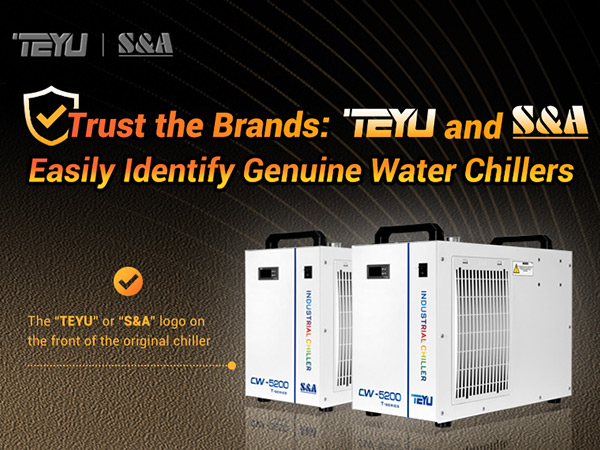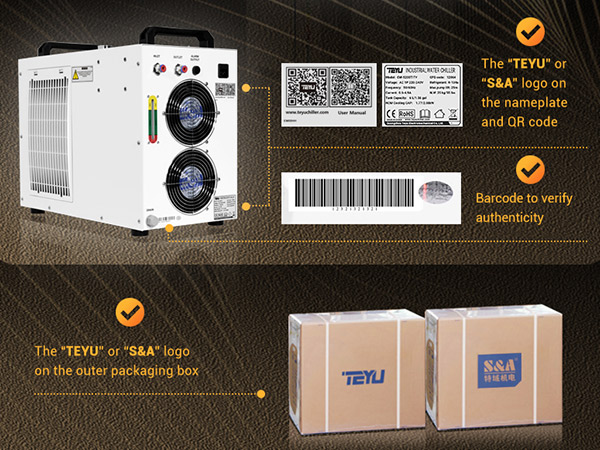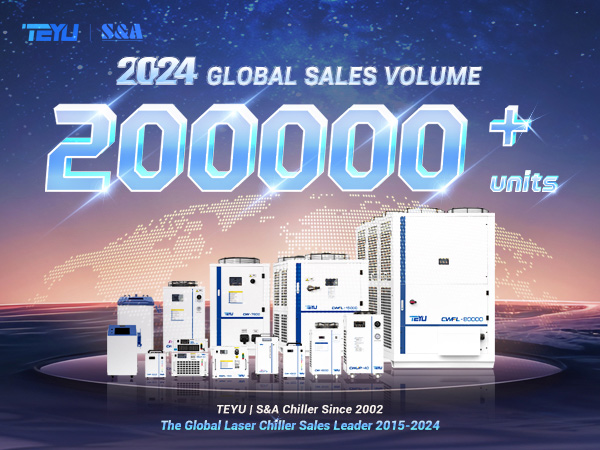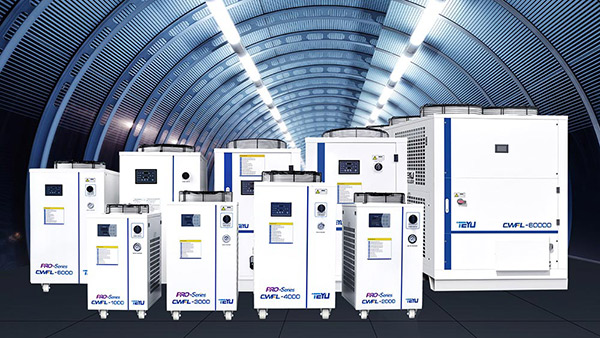With the rise of counterfeit products in the market, it’s important to verify the authenticity of your TEYU chiller or S&A chiller to ensure you're getting a genuine chiller product. Here’s how you can easily distinguish between an authentic industrial chiller and a fake one:
Check for Logos:
Genuine TEYU chillers and S&A chillers will have our "TEYU" or "S&A" logos prominently displayed in multiple locations on the machine, including:

The front of the industrial chiller
The side casings (for some larger models)
The chiller machine's nameplate
The outer packaging
Verify the Barcode:
Each TEYU chiller and S&A chiller has a unique barcode on the back. You can verify its authenticity by sending the barcode to our after-sales team at service@teyuchiller.com. We will quickly confirm if your industrial chiller is genuine.

Buy from Official Channels:
To ensure you’re purchasing a genuine TEYU S&A product, we recommend buying directly from our official channels, such as contacting our sales team at sales@teyuchiller.com. We can also provide you with details of our authorized distributors.
With over 23 years of experience in industrial and laser cooling, you can trust TEYU S&A Chiller Manufacturer for reliable, high-quality chillers. Choose with confidence and enjoy peace of mind knowing that your chiller product is backed by our expertise.
Source: https://www.teyuchiller.com/how-to-identify-genuine-teyu-industrial-chillers

